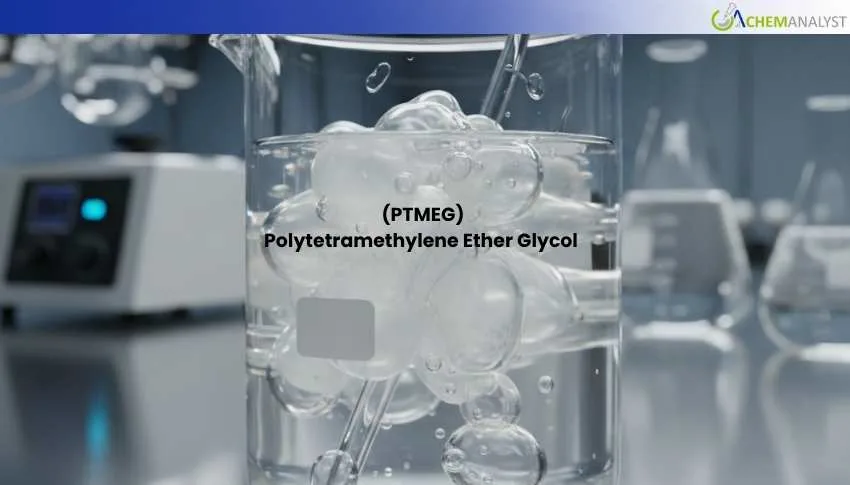Welcome To ChemAnalyst

During mid-November 2025, Polytetramethylene Ether Glycol (PTMEG) prices in Asia remained stable at low levels, pressured by weak cost support and sluggish downstream demand. Feedstock THF declined 6.8% in October, while PTMEG fell 3.4%, reflecting oversupply and slow market activity. High inventories, stable plant operations, and cautious buying from the spandex sector continued to weigh on sentiment, keeping prices steady but vulnerable to further declines.
In China, PTMEG supply remained sufficient, with domestic plants running smoothly and no disruptions reported. However, the market continued to face significant oversupply as new orders fell sharply. Elevated inventories accumulated at factories, placing financial strain on producers and reducing confidence in maintaining current pricing levels.
The supply side also faced pressure from broader market developments. Huafeng Group’s upcoming 240,000-ton/year capacity expansion in Chongqing Fuling—double its original plan—intensified concerns about future supply length. The expectation of additional volumes entering the market in the coming months further dampened sentiment among traders and manufacturers.
Feedstock conditions did little to support PTMEG. Tetrahydrofuran (THF) remained on a downward trend month-on-month, mirroring the persistent imbalance in supply and demand. Lower THF values reduced PTMEG production costs, but this also intensified price pressure, as producers lacked the cost incentive to hold firm on offers.
Demand in China’s downstream spandex sector stayed largely stagnant. Buyers preferred rigid “buy-as-needed” procurement, avoiding large replenishment cycles and focusing on minimal quantities. Spandex prices fell 2.41% month-on-month by October 31, reflecting weak yarn shipments, rising inventories, and sluggish order intake. International demand remained flat as well, with US tariffs implemented earlier in 2025 continuing to divert orders toward lower-cost regional suppliers.
In India, PTMEG demand showed similarly weak patterns driven by cautious downstream spandex procurement. Buyers continued to purchase only essential volumes, mirroring broader Asian trends. Limited restocking activity and slow yarn movement kept sentiment soft, reinforcing the regional oversupply situation.
India’s textile sector also faced strong external headwinds. After recording 7% growth from April to October 2025, textile exports sharply reversed in October, falling 16.3% to $6.7 billion. Reduced shipments to the US—stemming from tariff changes—played a major role in weakening demand for spandex and, in turn, PTMEG.
The combination of softer domestic consumption, sluggish export activity, and restrictive purchasing behavior from textile manufacturers kept India’s PTMEG market subdued through mid-November. Buyers showed no urgency to build inventories, anticipating further easing in PTMEG offers ahead.
Looking ahead, PTMEG prices in Asia are likely to face additional downward pressure. Year-end destocking may drive discounted offers from both traders and producers, while downstream buyers are expected to delay procurement, anticipating further declines amid weak market momentum. This environment points to a softer pricing trend heading into December.
We use cookies to deliver the best possible experience on our website. To learn more, visit our Privacy Policy. By continuing to use this site or by closing this box, you consent to our use of cookies. More info.
